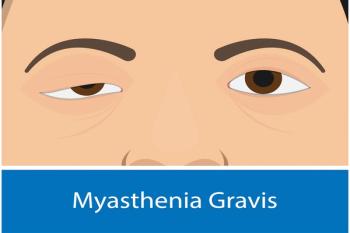
First-in-Class Brensocatib Could Help Treat Patients With Bronchiectasis: James Chalmers, MD
The approval of brensocatib for use in patients with bronchiectasis could offer the first treatment directly addressing the roots of the condition.
James Chalmers, MD, chair of respiratory research, Cardiology, at the University of Dundee, Scotland, discussed the ways that bronchiectasis could present itself as well as how brensocatib aims to address the underlying causes of exacerbations in the condition.
This transcript has been lightly edited for clarity; captions are auto-generated.
Transcript
What is bronchiectasis and how can the condition be treated?
Bronchiectasis is a chronic respiratory disease. It's common. The prevalence estimates are around 1 in 200 adults, which sometimes surprises people, just how common this is. Patients experience chronic cough, sputum production, and recurrent respiratory tract infections, what we call exacerbations. It has a huge burden on patients, so the quality of life impairment for patients is high. Patients really suffer with these daily symptoms, and they consume a lot of health care because of high rates of antibiotic use and hospitalization for severe exacerbations.
In terms of the current treatment, our standards of treatment are airway clearance, so physiotherapy exercises to clear mucus from the chest, frequent courses of antibiotics to manage exacerbations, and some patients receive long term antibiotics in order to try and manage chronic infections of the airways. Unfortunately, most of these treatments are not particularly effective, and that's why the burden of disease is so high.
What mechanisms do brensocatib use to help in treating this condition?
Bronchiectasis is an inflammatory disease, so the airways are full of these inflammatory cells called neutrophils. They damage the airway and they impair the body's ability to fight off infection, which is why our patients suffer from repeated respiratory exacerbations. Brensocatib is the first in class of these drugs called dipeptidyl peptidase 1 inhibitors. What does dipeptidyl peptidase 1, or DPP1, do? It's an enzyme that activates neutrophil serine proteases in the bone marrow. What does that mean? It works in the bone marrow when neutrophil are developing. When they're developing, they make these chemicals called neutrophil serine proteases. These are enzymes that digest the lung.
Once the neutrophil gets the lung, releases these enzymes, which damage the lung, cause disease progression, if you switch them off in the bone marrow when the neutrophil is developing, by blocking DPP1 you reduce lung inflammation, you reduce the risk of exacerbation. And by not having these chemicals damaging the lining of the lung, you slow down disease progression. That 20 years of research has taught us that antibiotics are unlikely to be the answer for this disease. It's an inflammatory disease that needs to be tackled at the inflammatory level, and that's what brensocatib and the DPP1 inhibitors do.
Newsletter
Stay ahead of policy, cost, and value—subscribe to AJMC for expert insights at the intersection of clinical care and health economics.













































